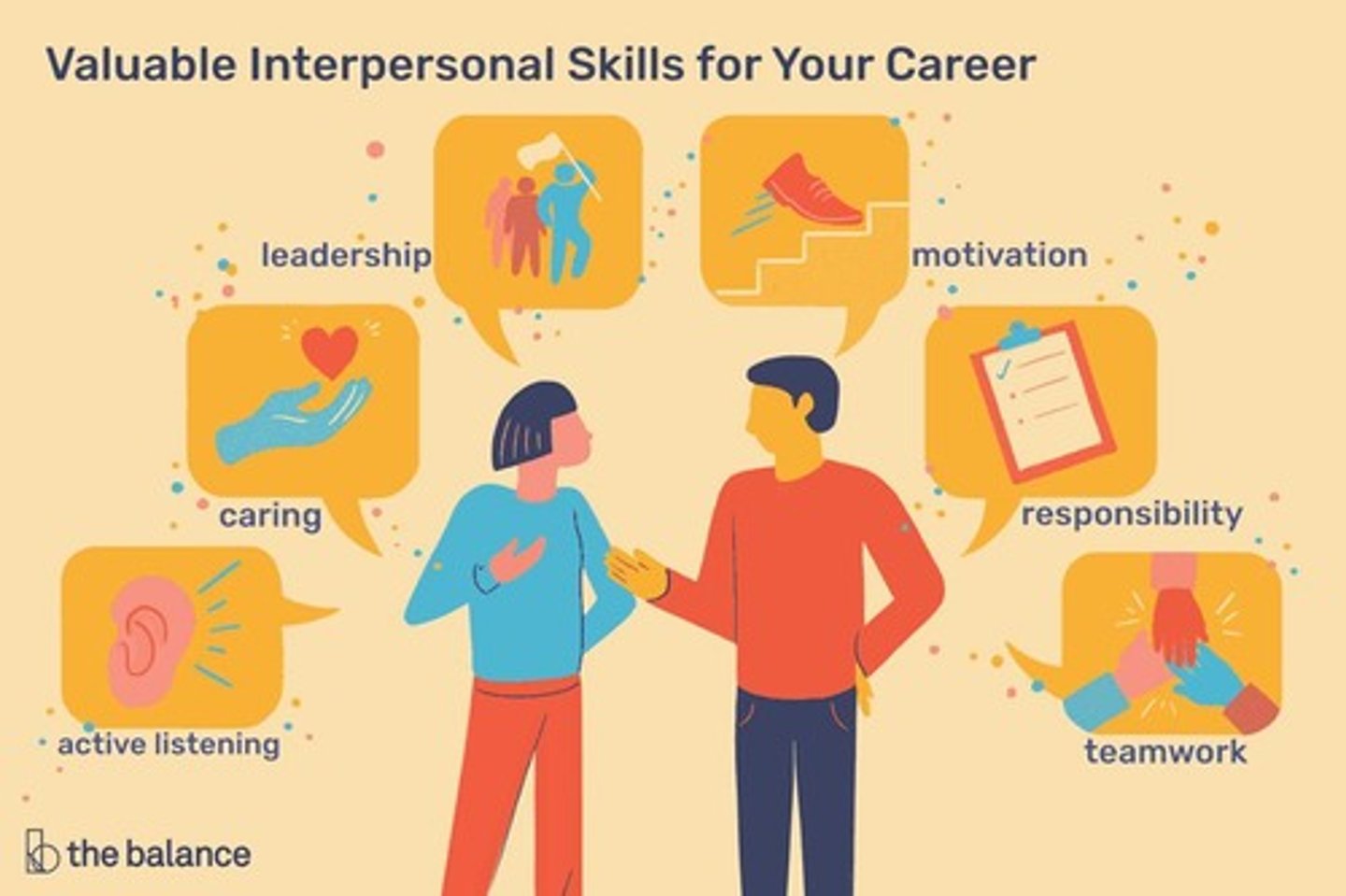PED 330: Communication Skills and Relationships in Coaching
1/42
There's no tags or description
Looks like no tags are added yet.
Name | Mastery | Learn | Test | Matching | Spaced |
|---|
No study sessions yet.
43 Terms
Three Dimensions of Communication
Sending and receiving messages, verbal and nonverbal, content and emotion.
Sending and receiving messages
The process of conveying and interpreting information between individuals.
Verbal and nonverbal
Includes spoken words and body language such as gestures and facial expressions.
Content and emotion
Content refers to the substance of the message, while emotion refers to how one feels about it.
Eight Communication Skills to Avoid
A list of ineffective communication styles that coaches should not adopt.
Coach Incredible
A coach who never admits to errors, lacks respect, and is self-centered.
Coach Naysayer
A coach whose words and actions are predominantly negative and slow to praise.
The Judge
A coach who evaluates rather than instructs, placing blame instead of providing constructive feedback.
Coach Fickle
A coach whose messages and discipline are inconsistent, leading to uncertainty.
Coach Glib
A coach who talks excessively and fails to listen, dominating conversations.
Coach Stone
A coach who shows no emotion and is unapproachable.
The Professor
A coach who cannot explain concepts at an understandable level for players.
Coach Skinner
A coach who misunderstands reinforcement principles, rewarding wrong behaviors.
Why Communication is Sometimes Ineffective
Communication can falter under stress, passion, or when the outcome is crucial.
Developing your Communication Skills
Includes building credibility, maintaining a positive approach, and improving listening skills.
Coaching & Social Media
Guidelines for coaches on how to manage athletes' use of social media.
Educate your athletes about appropriate & responsible use of social media
Coaches should inform athletes about the dangers of inappropriate social media use.
Remind athletes they represent your team & school
Athletes should be aware that their online presence has consequences.
Organization's policy regarding coach/player site & connections
Establishing clear guidelines for online interactions between coaches and players.
Ask athletes to set privacy settings
Encouraging athletes to protect their online information.
When policies are violated - consider consequences
Coaches should address breaches of social media policies appropriately.
Interpersonal Skills
Qualities important for coaches to possess, including knowing and trusting oneself and others, accepting and supporting others, communicating effectively, and resolving conflict.

Trust
A crucial element in relationships that can be damaged by rejection, ridicule, or disrespect.
Integrity
The quality of doing what you say and being honest, genuine, and authentic.
Assistant Coaches
Individuals who have meaningful roles and should have their strengths matched to duties, given time, evaluated, and recognized for their contributions.
Coaches of Other Teams
Colleagues who share the profession and should meet, respect, exchange information, and be involved in coaching associations.
Administrators
Individuals who coaches must understand expectations and procedures from, and should be organized, keep informed, and invite to practices and games.
Medical Personnel
Individuals who provide support and respect decisions without interference, and should be shown appreciation.
Officials
Individuals whose complaints can become distractions; coaches should model good behavior and treat them with respect.
Parents
Individuals who loan their children to coaches and should be given clear guidelines about roles and expectations.
Coaching as a Helping Profession
The concept that coaching involves nurturing athletes, providing security, and recognizing their achievements.
Conflict Resolution
The ability to effectively resolve disagreements and maintain positive relationships.
Communication
The process of effectively sharing information and feelings with others.
Evaluations
The process of assessing the performance and contributions of assistant coaches and other team members.
Parent Orientation Program
A handout provided to parents to clarify their roles and expectations in the coaching relationship.
Security and Recognition
Feelings that athletes should experience as part of their development and support from coaches.
Public and Private Recognition
The practice of acknowledging contributions of team members both in public settings and privately.
Guidelines for Parents
Clear instructions provided to parents about their roles and expectations in the coaching process.
Face-to-Face Communication
Preferred method of communication with parents, as opposed to emails or texts.
Injury Notification
The responsibility of coaches to inform parents immediately when an athlete is injured.
Coaching Associations
Organizations that coaches should be involved with to foster relationships with peers.
Respect for Decisions
The importance of supporting medical personnel's decisions and maintaining a united front.
Avoiding Intimidation
The practice of treating officials and others with respect to prevent creating a hostile environment.